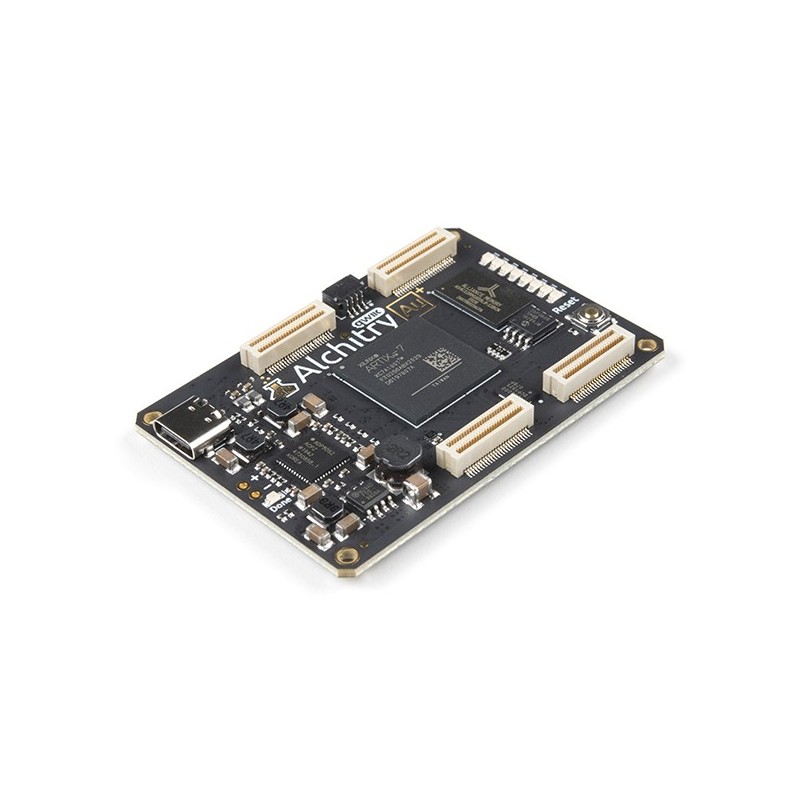





Alchitry Au+ is an evaluation kit equipped with a Xilinx Artix 7 XC7A100T FPGA chip with over 100,000 logic cells and 256 MB of DDR3 RAM. Offers 102 3.3V IO pins, 20 of which are switchable to 1.8V, nine differential analog inputs, eight general-purpose LEDs, built-in 100MHz clock that can be manipulated internally via FPGA, USB-C connector for configuration and power supply of the board and a USB interface for data transfer. The board also has a Qwiic connector, which facilitates the connection of sensors and expansion modules compatible with this standard.
Alchitry is a project aimed at providing the necessary tools for beginners to learn FPGA - from cheap kits, through numerous teaching aids and an integrated work environment.
The kit is powered by Vivado, the latest Xilinx design tools. The system can be programmed using standard languages - Verilog and Lucid languages are dedicated to the set, for which the manufacturer has prepared numerous tutorials.
Manufacturer BTC Korporacja sp. z o. o. Lwowska 5 05-120 Legionowo Poland sprzedaz@kamami.pl 22 767 36 20
Responsible person BTC Korporacja sp. z o. o. Lwowska 5 05-120 Legionowo Poland sprzedaz@kamami.pl 22 767 36 20
The expansion board is designed to work with Alchitry Au and Alchitry Cu. The board has four 7-segment LED displays, five buttons, 24 LEDs and 24 DIP switches. SparkFun DEV-16525
Prototype board designed to work with Alchitry Au and Alchitry Cu. There are prototype holes on the board with a 2.54 mm raster connected to the board connectors. SparkFun DEV-16524
Evaluation kit equipped with Xilinx Artix 7 XC7A35T-1C FPGA chip and 256 MB DDR3 RAM. The kit is supported by Vivado and the Verilog and Lucid languages. SparkFun DEV-16527
No product available!
The expansion board is designed to work with Alchitry Au and Alchitry Cu. The board has four 7-segment LED displays, five buttons, 24 LEDs and 24 DIP switches. SparkFun DEV-16525
Prototype board designed to work with Alchitry Au and Alchitry Cu. There are prototype holes on the board with a 2.54 mm raster connected to the board connectors. SparkFun DEV-16524
Set with Alchitry Au FPGA development board and expansion modules: Alchitry Br and Alchitry Io. The set includes a set of Alchitra Br connectors. SparkFun KIT-16497
No product available!

Evaluation kit equipped with Xilinx Artix 7 XC7A100T FPGA chip and 256 MB DDR3 RAM. The kit is supported by Vivado and the Verilog and Lucid languages. SparkFun DEV-17514
